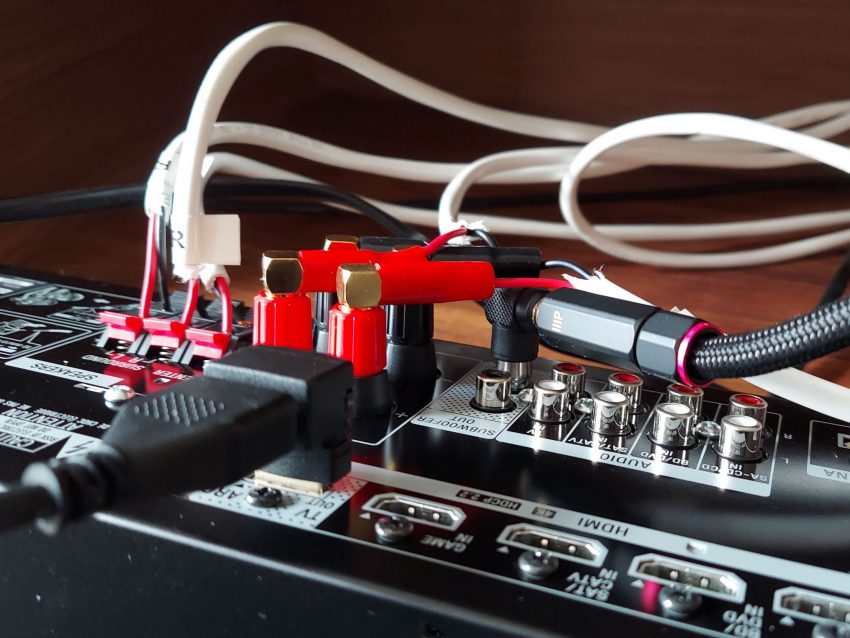This is a tale of unusual shortsightedness and a lack of planning for appropriate details that is later redeemed with what I hope will be a solution for others in the same situation.
I recently got a new television, same size as the old one, but as soon as I tried to put it on top of my trusty old media console it was obvious that I would need to buy a new one as the TV’s base extended beyond the width of my old media console. I know, cue some tiny violins.
I was looking for something with a nice mid-century modern look, with legs that elevated the stand off the floor (have to let the roborock vacuum do its thing under there after all), with storage for some electronics, and the ability to make it look like a clean setup…and the only thing that I was focused on was that the new TV stand was wide enough for the new TV’s base to sit upon. I didn’t think about the electronics that I would put in it, I just took it for granted that a media console would be able to handle the standard electronics people like to put in them. The New Pacific Direct – Wilson 58″ TV Stand is what I found. As an added benefit, it did not have any chemical smell that is typical of most furniture nowadays.
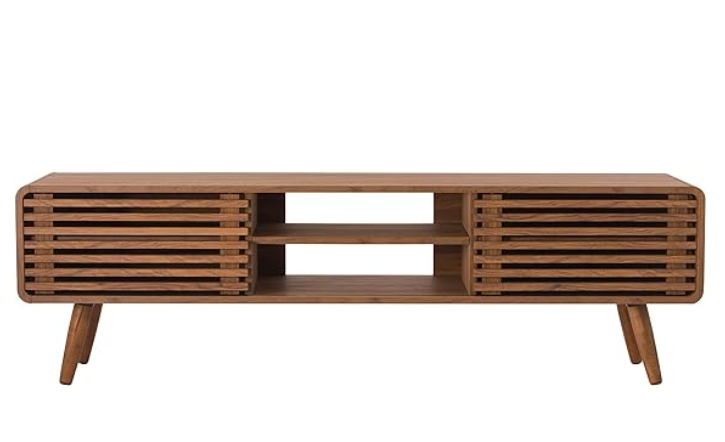
Cool, got that ordered, and it literally came the next day. It was easy to put together, though it took a little time. I used my Porter-Cable cordless drill on speed setting 1 with a light finger on the trigger to ease all the hardware in without damaging the wood, this is flat pack furniture after all, got to baby it a little to keep it nice. Everything came together and honestly it looks great.
Then I realized the area I intended for my Denon AVR591 looked kind of small, like unusually small. I broke out the tape measure and found that while width and height would work – albeit very tight for airflow – the depth was the tough part. The New Pacific Direct – Wilson 58″ TV Stand only has around 12″ of internal depth from the back of the cubby, which is a 1/2″ piece of laminate MDF, to the back of the sliding door. My Denon receiver has a depth of 15″, and that’s not including all the connections! Even if I removed that piece of MDF in the back, the receiver would stick out at least 3″ and show a mess of wires that would have to be managed. It really wouldn’t look good. Even if I didn’t use the sliding door on that side, it would hang out the front and back. The Denon is 14 years old, it is still working great, but it didn’t work in this new furniture, and the Wilson TV Stand just looks so good, so I’m not going to give up on it…I guess I’m going to need a new AVR then!
Now the search was on for the shallowest depth media receiver I could find, hoping that there would be one that would work. It turns out that this is a really depressing search where you realize that while most things in the electronics world have shrunk over the years, AV receivers have not changed. Not really. I’ll spare the details, but I found one that might work. Just one. That’s it. Seriously. There’s only one surround sound receiver under 12″ of depth. The next closest aren’t even close. Maybe someone in the comments can prove me wrong.
What is the smallest, fully functional surround sound audio receiver you can find I hear you asking after that excessively long-winded intro? It’s the Sony STRDH590 5.2. It is 11.75″ from the very front of the dial to the back of the longest output in the back. The main body has 10″ of depth excluding the dials.
Thank you to the AV geeks that answered my questions on Amazon because they were thorough in giving me dimensions about every part, front to back. It gave me enough confidence that I might be able to pull this off, so I ordered it.
Next step to figure out on this journey is how to minimize the depth of the connections. Fortunately there are tons of options for 90 degree AV connections. I bought 2 – 90° banana plugs, 1 – 90° RCA adapter, and 1 – 270° HDMI connector. For the HDMI connector you have to be particular because the HDMI cable will have to go up rather than down in order to fit as you can see in the image below.
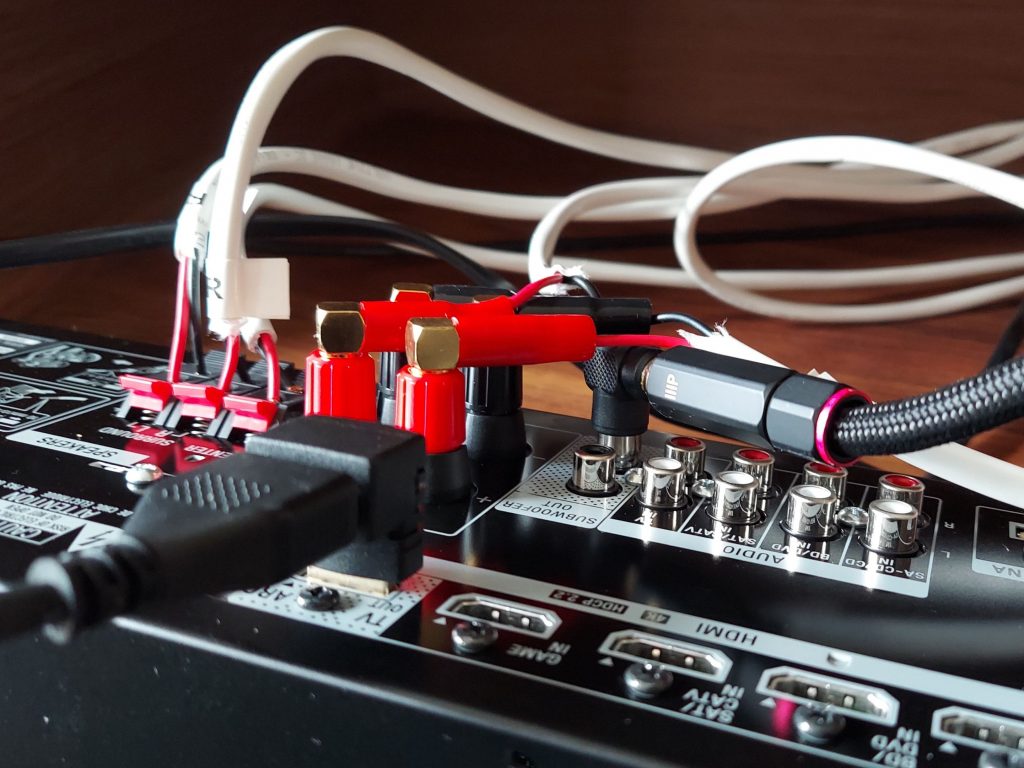
It’s kind of weird that the Sony STRDH590 only uses two sets of banana plugs for the Front Left and the Front Right speakers, with spring clip for the rest. I honestly don’t get it. Either use it for all or none. The front speakers can use up to 10 AWG wire, while the center and rears can only use up to 12 AWG? Why? Someone please explain the logic here. I could see wanting a thicker gauge wire for rear speakers since they tend to be a further distance from the receiver, and needing less resistance if they are sufficiently far, but the front’s tend to be closer. Maybe you want more power to the front speakers, but this receiver does not put out enough power per channel to need 10 AWG.
Ok, so after all that, does it work? YES!!! I mean, barely. It’s so tight that the door and the dials rub when you slide the door open, and you have to angle it a little, so the side with the dials are further back than the left side, but overall it’s in there. In the picture below, that black line is the track where the door slides closed in front of the receiver. You can’t really see it when the door is closed, and the remote functions fine. This is great!
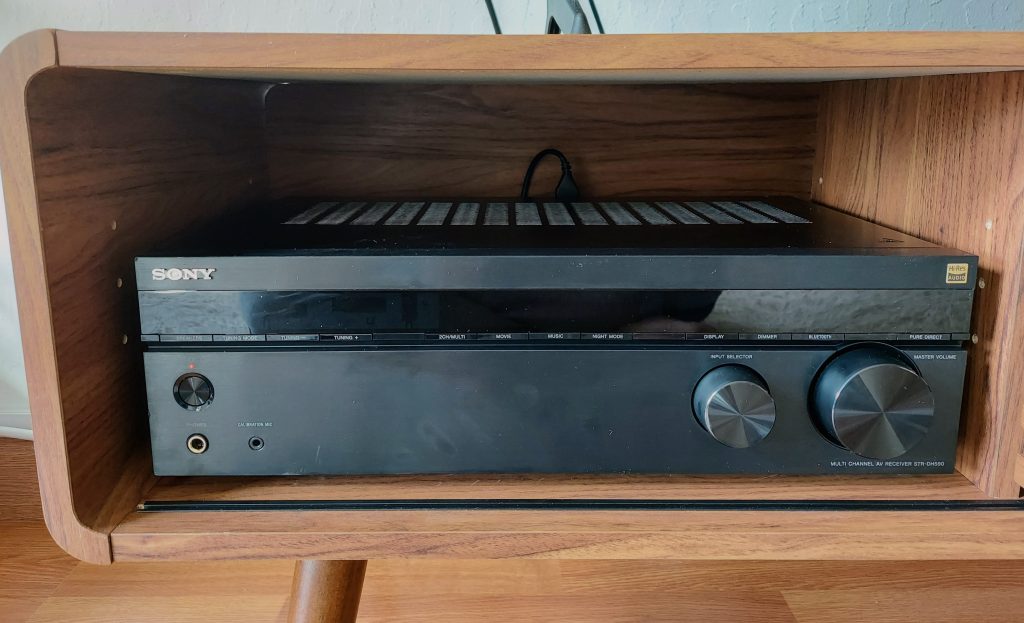
It fits!!!
Ok, so the AVR issue is solved, but there’s a problem with the Wilson TV Stand. It advertises as having “cable management”. It means that between the 2 side compartments, there is 1/2″ of space to pass cables through at the very back, however if you try to pass a power cable through there, you will be disappointed, because the electrical plug is too big! I have no idea who designed this thing, but they should have done some user research first. That’s not a problem though because I have the RYOBI 15 Amp 10″ Sliding Compound Miter Saw. So after disassembling the Wilson TV Stand halfway to get the middle partitions out, I trimmed those pieces, removing 3/8″ of material off the back. Not a lot, but just enough to make this furniture functional and to be able to pass power cards from the left and right cubbies out through the back of the center cubby.
A potential issue that some users may have with the Wilson TV Stand is the depth of the top. If your TV base is deeper than 11″ (like mine), and has a leg style like this one, you’re probably not going to be comfortable putting your TV on this stand. It won’t take much of a bump for your TV to fall off. I positioned mine closer to the wall for more buffer up front.
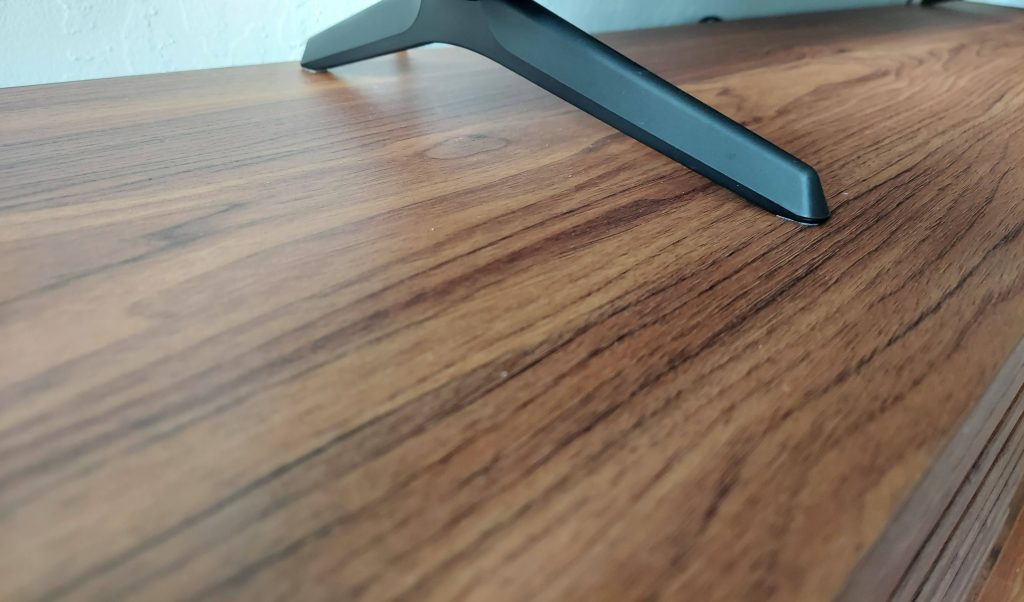
Make sure the TV base is not too wide
There is enough air coming in from the back with the extra space added with that cut, and with the slatted door in front, and the generous space above the unit for there to be convection to move air, so I’m not concerned about heat buildup for the Sony STRDH590 AV Receiver.
This whole post is just about getting something that can work in cramped conditions, but I’m really happy with the quality of sound coming out of the STRDH590. The auto-setup feature was super easy to go through. The on-screen guide works really well. In general, it’s setup was far simpler than my older Denon. It’s not going to beat the pants off of more capable gear for sure, but if you’re in this position, there’s literally no other option for a receiver. The Wilson TV Stand is pretty much pushed to the wall, and recovers some space in the living room compared to the old, chunkier, media console. It looks elegant and unimposing. I’m happy with both of these purchases, although the Wilson TV Stand required some modifications to make it work.
